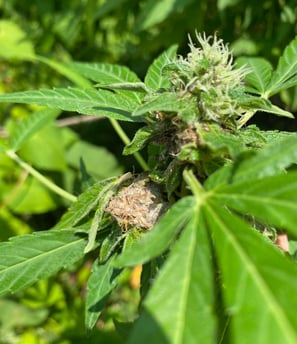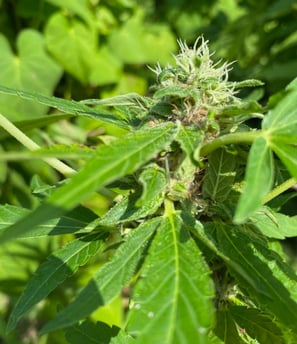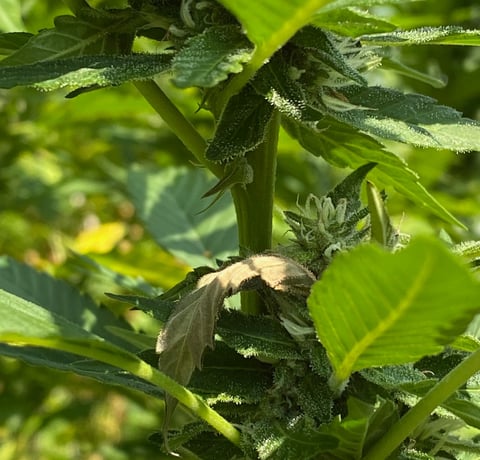Spot the Rot
Catching and removing bud rot early will help get more of your flower across the finish line. Here's how!
13 plants...
3 min read


Mid September in RVA, and it’s been swampy to put it bluntly. These are the conditions botrytis thrives in, and if you aren’t doing a handful of key things, it can get away from you pretty quickly. If bud rot gets away from you, it’ll wreck your harvest.
Scouting for problems in general should be a pretty regular thing for you at this point. What are we scouting for?
Primarily, I scout for anything irregular. Dark spots are what my eye seems to notice first, and they often can be the sign of a problem. A dark, wilting sugar leaf, turned brown or dark green is a sure sign of a problem. Dark spots on the colas themselves often also reveal problems underneath.
TIP: A flashlight used after dark (or better, a black light) will make dark spots easier to spot. This also helps when hunting for caterpillars.


You can barely see the darkened spot on this Black Thai cola.
Breaking it open reveals significant bud rot.
So, you’ve found rot. Don’t throw in the towel just yet… there’s a bunch you can do make the most of your situation.
The first step is to cut that rot out liberally. Usually, this means a rotten nugget and any nuggets touching the damaged one. Sometimes, it’s the whole top, sometimes the whole branch. It pays to catch rot early, so that losses can be minimized. You’re now in a race against the clock.
What I mean is that you want to keep the remaining flower on the plant as long as you can, prior to the botrytis infection spreading to that flower. If you’re catching your rot early and cutting it out diligently, you can continue ripening… often for weeks or more. Sometimes, if I really have my shit together, I’ll follow up the pruning with a spray bottle of Agrowlyte or Lost Coast. Just spray judiciously and choose your product carefully. Definitely never spray neem oil on your flower.
I get the question regularly… Should I harvest early to beat out the bud rot?
Often, there is no need to harvest early, in my opinion. If you are cutting out rot like the good gardener we are all striving to be, you’ll have the buds that surround those rotten sections that will be perfectly good to consume. I’ll dry them out in the open, generally in the kitchen, where I can monitor for any rot development and keep them separate from the dry room. That becomes the early harvest, something nice to sample and helps me gauge how ripe I prefer a particular plant’s flower.
That said, if the rot really is getting away from you on a plant, it might be best to chop the whole plant and salvage what you can. At the point where whole tops or branches need to be removed, I’ll consider harvesting the whole plant early.


A darkened, wilting leaf on this Fiji Sunset bud is a sure sign of some fuckery.
There are many actions you can take to prevent and remediate rot. Spotting it and removing it when you do is foundational. In my experience, doing everything you can only increases your chances for success.
Stay tuned, I'll be doing many more pieces on managing bud rot. It might be my favorite subject when it comes to outdoor growing in Virginia!
